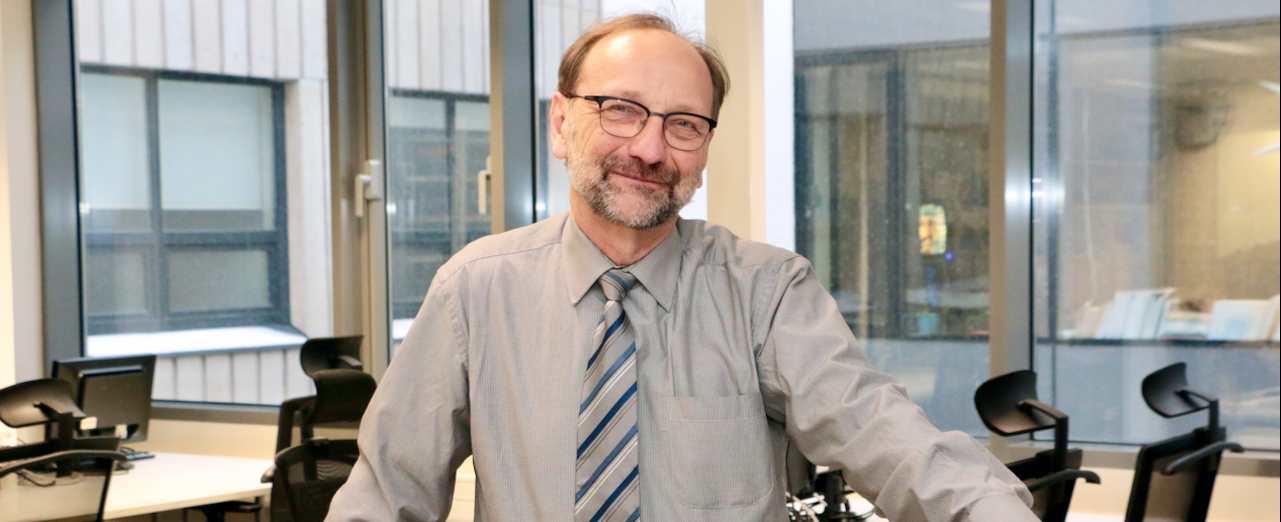Interview with Peeter Normak, the Director of the School of Digital Technologies
The School of Digital Technologies will continue to be led by its current director, Professor Peeter Normak, who was elected for a further five-year term on 8 May.

How do you view your time in the position of director so far?
The director is responsible for the development of the institute's academic fields, the general state of the institute, its results and its sustainability. In my view, we’ve seen positive changes in these areas over the last five years. Although activity support for the institute has been pretty much frozen for the sixth year in a row, we’ve improved where all the important indicators of success are concerned. I can't list all of our achievements and success stories, it’d take too long! I'll mention one though: our IT research activities earned the highest grade in external evaluations for both the criteria that were assessed – level of research and serving the community.
In the faculty satisfaction survey they did last year, our institute got the highest results in the university in six of the seven criteria they asked about. Our future prospects are promising, too. All five of the institute’s academic areas – technology-enhanced learning, the information sciences, human-computer interaction, mathematics and the didactics of mathematics and applied informatics – are prioritised to some extent in Estonia, and internationally.
What do you think of the current state of the schools created since the structural reforms?
I think the institutes have more or less developed their own identities, and the faculty’s stabilised. With a limited budget, of course, institutes that have a real need for laboratory work are clearly struggling more – the Baltic Film, Media, Arts and Communication School, the School of Natural Sciences and Health, plus the School of Digital Technologies. The support of the Information Technology Foundation for Education meant that the School of Digital Technologies was in a better state in previous years, but now that the purchase of computer classes is no longer being funded, we’re in a difficult position.
What questions and issues still need answering and resolving?
The development opportunities for the School of Digital Technologies depend mostly on resources. As a public university, our mission is to contribute to the development of Estonia as a whole, so finding the necessary resources for that is essential. The current state budget strategy doesn’t include any increase in funding for universities, which is why we’re having to increase the amount of paid English programmes, training courses, contracts with businesses, research and development projects and the like. Although the SDT is the only institute in the university in which the number of students has grown in the last five years, there are course programmes where the number’s still too small to ensure sustainability in society. Unfortunately, most of them are maths and teaching programmes.
Development requires change, but people crave a certain amount of stability. When you’re planning innovations, you have to consider the faculty's readiness for change.
What experience have you gained for your new term in office from your last five years as director?
What the director does is actually much broader than what’s written in the statutes, especially when it comes to representing the interests of the institute outside of the university. My involvement in expert groups, decision-making groups and social networks has generated momentum for lots of new initiatives. Sometimes the challenge is in finding unity between the development goals of the institute and faculty members. Development requires change, but people crave a certain amount of stability. When planning innovations, you have to consider the faculty's readiness for change. It's different for different people: any change will find support among some and opposition from others. The challenge is ensuring the development of the institute with limited resources while also maximising the general level of satisfaction among faculty members.
What are your main aims related to education at the institute?
It's important that we boost our student and graduate numbers in lots of our Estonian programmes, and boost the number of Estonian students in English programmes. A big challenge we’ll soon be facing is launching the English Master's programme for interaction design. It will be the first fully online course programme in Estonia. The director's task is to create circumstances that facilitate these problems being resolved, like applying to have the maths course added to the list of smart specialisation growth course programmes.
But in supporting researchers and research?
The content and quality of research is largely dependent on the abilities of the professors. Supporting the filling of tenure positions for capable professors I see as my biggest task. In order to ensure that new young professors come up, we have to increase the number of early-stage researcher positions. I see enormous potential in integrating the institute's fields of research. The institute’s supervisory board approved an academic field integration strategy at the beginning of the year as the base document for the director.